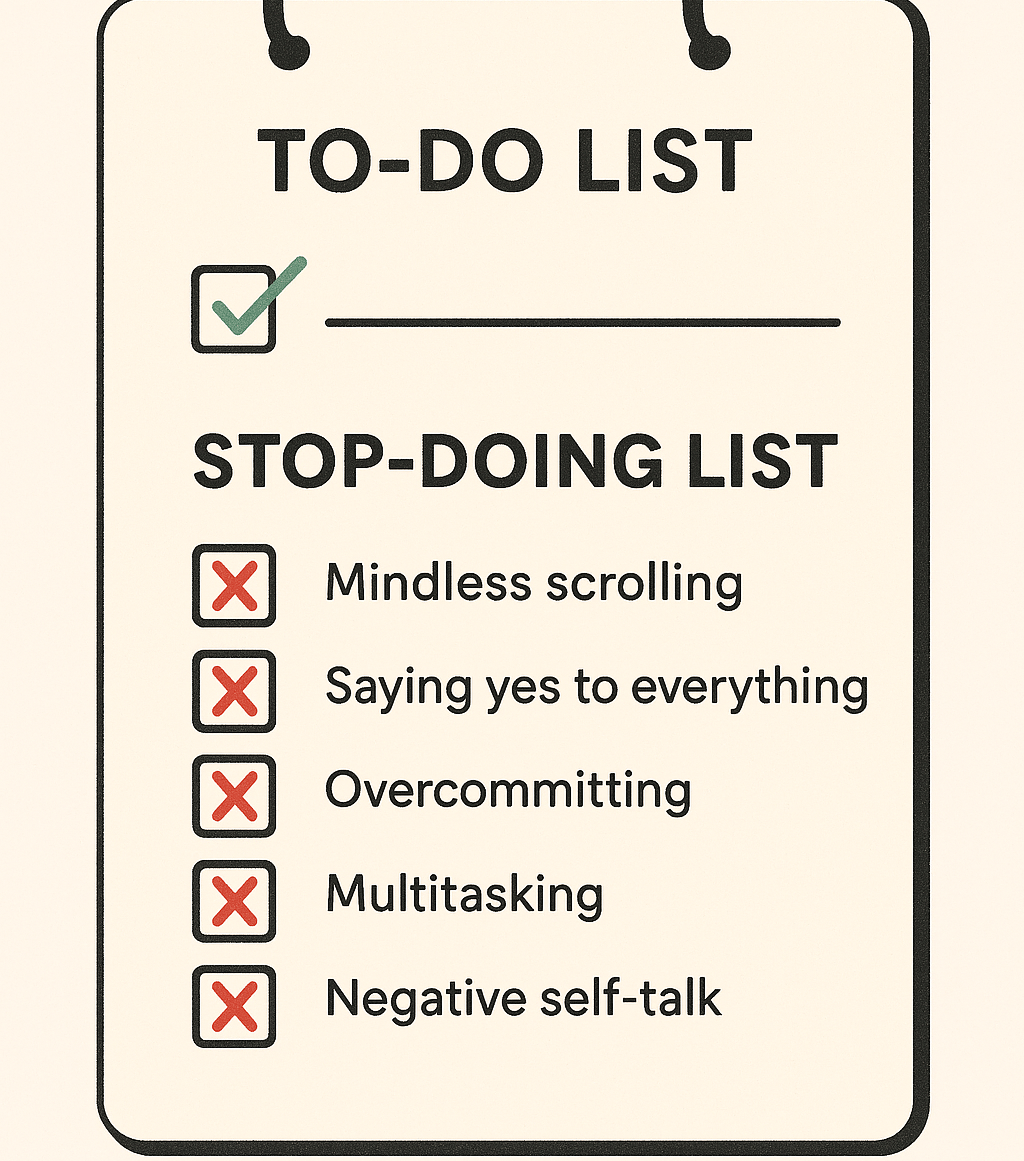The Stop-Doing List: Warren Buffett’s Productivity Secret to Success (How to Focus & Achieve More by Doing Less)
Discover why a "Stop-Doing" list boosts productivity more than a to-do list! Learn Warren Buffett’s 5/25 rule, reduce decision fatigue, and eliminate distractions. Get step-by-step tips to focus on what truly matters. #Productivity #SuccessHacks
MOTIVATION


Why a "Stop-Doing" List Works: The Secret to Productivity and Success
In today’s fast-paced world, productivity is often measured by how much we can accomplish. But what if the key to success isn’t doing more—but doing less? Warren Buffett, one of the most successful investors of all time, follows a simple yet powerful strategy: focusing on fewer things to achieve greater results.
This is where a "Stop-Doing" list comes in. Unlike a to-do list that adds tasks, a stop-doing list helps you eliminate distractions, reduce decision fatigue, and focus on high-impact activities. In this article, we’ll explore why this strategy works, how to create your stop-doing list, and actionable steps to boost productivity, improve time management, and achieve success.
Why a Stop-Doing List Works: 3 Key Benefits
1. Focuses on What Truly Matters
Warren Buffett’s 5/25 Rule is a game-changer for productivity. Here’s how it works:
Write down 25 career or life goals.
Circle the top 5 most important ones.
Avoid the remaining 20 at all costs—they’re distractions.
Most people spread themselves too thin, trying to juggle multiple goals at once. But high achievers like Buffett focus intensely on a few priorities. A stop-doing list forces you to cut the clutter and direct your energy toward what truly moves the needle.
2. Reduces Decision Fatigue
Every time you say "yes" to an unimportant task, you drain mental energy. Decision fatigue sets in, making it harder to focus on critical work.
A stop-doing list preserves mental bandwidth by:
Automating or delegating low-value tasks
Avoiding unnecessary meetings
Cutting out habits that waste time
By removing trivial decisions, you free up energy for deep work—the kind of focused effort that drives real success.
3. Forces You to Quit What’s Not Working
We often stick with habits, projects, or commitments out of:
Guilt ("I should keep doing this")
Fear of missing out (FOMO) ("What if I regret quitting?")
Habit ("I’ve always done it this way")
A stop-doing list acts as a personal audit, helping you identify and cut what’s holding you back. If a task isn’t contributing to your goals, it’s time to let it go.
How to Build Your Stop-Doing List (Step-by-Step Guide)
Step 1: Identify Time-Wasters
Ask yourself:
✅ What tasks do I do out of obligation, not purpose?
✅ What habits drain my energy without adding value?
✅ What commitments am I keeping just to avoid guilt?
Common time-wasters include:
Checking email first thing in the morning (kills focus)
Mindless scrolling on social media (steals hours)
Attending unnecessary meetings (drains productivity)
Step 2: Apply the Buffett 5/25 Rule
List your top 25 goals (career, health, personal growth).
Circle the top 5—these are your priorities.
Avoid the rest—they’re distractions unless they support your top 5.
This forces ruthless prioritization—success comes from saying "no" more than "yes."
Step 3: Start Saying "No" Relentlessly
Quit meetings that don’t need you (try asynchronous updates).
Delete apps that waste time (social media, games).
Drop projects that don’t align with your goals (even if they seem "good").
Every "no" to distractions is a "yes" to your success.
5 Things to Put on Your Stop-Doing List Today
Checking email first thing in the morning → Start your day with deep work instead.
Saying "yes" to every request → Protect your time like Buffett protects his investments.
Mindless scrolling → Replace with reading, learning, or strategizing.
Perfectionism on low-impact tasks → Done is better than perfect.
Trying to please everyone → You’ll never make everyone happy—focus on your mission.
